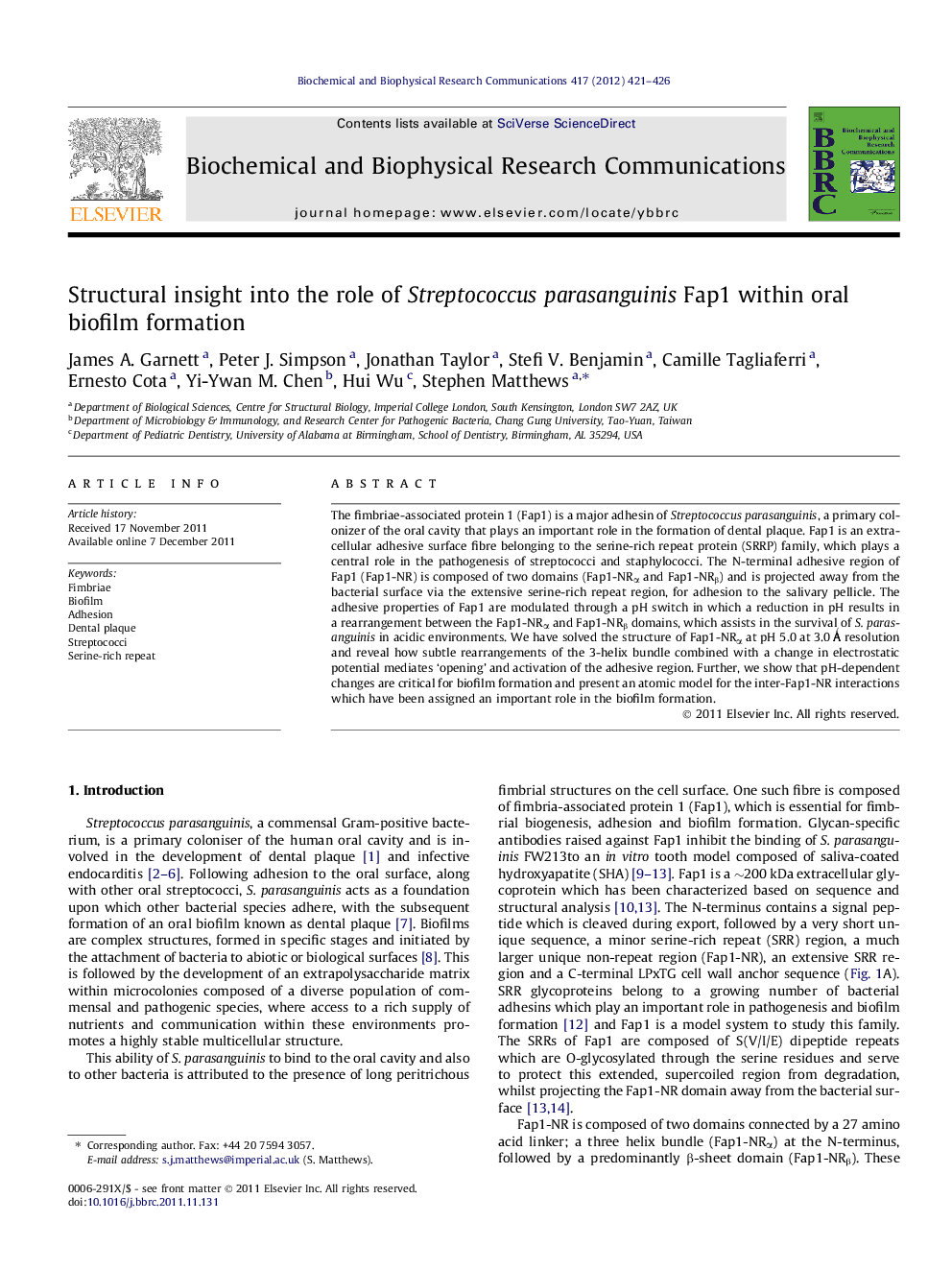| Article ID | Journal | Published Year | Pages | File Type |
|---|---|---|---|---|
| 1930138 | Biochemical and Biophysical Research Communications | 2012 | 6 Pages |
The fimbriae-associated protein 1 (Fap1) is a major adhesin of Streptococcus parasanguinis, a primary colonizer of the oral cavity that plays an important role in the formation of dental plaque. Fap1 is an extracellular adhesive surface fibre belonging to the serine-rich repeat protein (SRRP) family, which plays a central role in the pathogenesis of streptococci and staphylococci. The N-terminal adhesive region of Fap1 (Fap1-NR) is composed of two domains (Fap1-NRα and Fap1-NRβ) and is projected away from the bacterial surface via the extensive serine-rich repeat region, for adhesion to the salivary pellicle. The adhesive properties of Fap1 are modulated through a pH switch in which a reduction in pH results in a rearrangement between the Fap1-NRα and Fap1-NRβ domains, which assists in the survival of S. parasanguinis in acidic environments. We have solved the structure of Fap1-NRα at pH 5.0 at 3.0 Ǻ resolution and reveal how subtle rearrangements of the 3-helix bundle combined with a change in electrostatic potential mediates ‘opening’ and activation of the adhesive region. Further, we show that pH-dependent changes are critical for biofilm formation and present an atomic model for the inter-Fap1-NR interactions which have been assigned an important role in the biofilm formation.
► Crystal structure of Streptococcus parasanguinis Fap1-NRα at pH 5.0. ► pH-dependent conformational changes mediated through electrostatic potential of Fap1-NRα. ► Fap1 facilitates pH-dependent biofilms. ► We model inter-Fap1 biofilm interactions.
